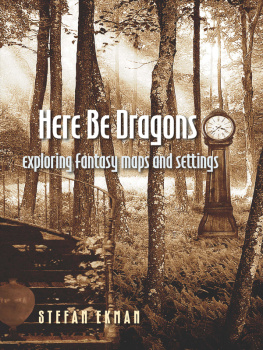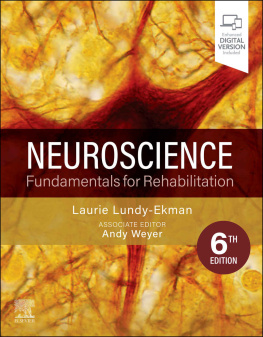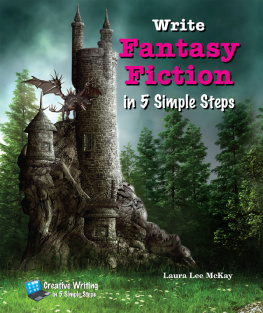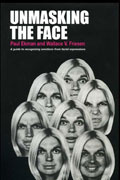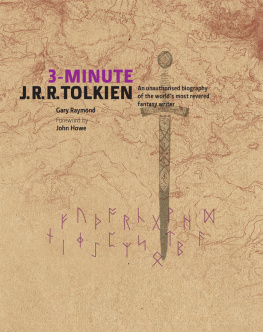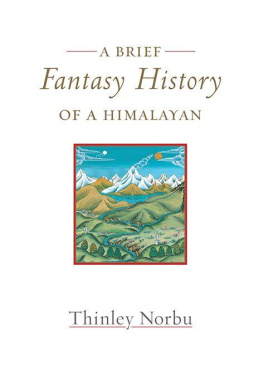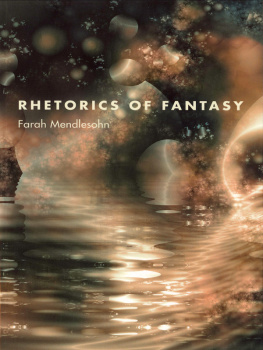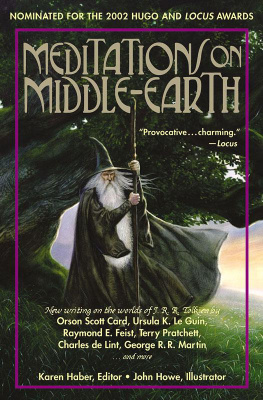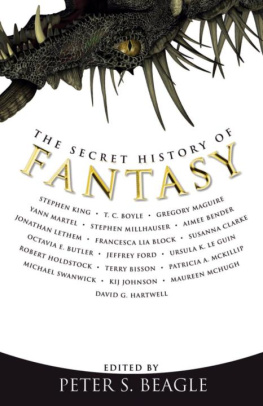
Here Be DRAGONS
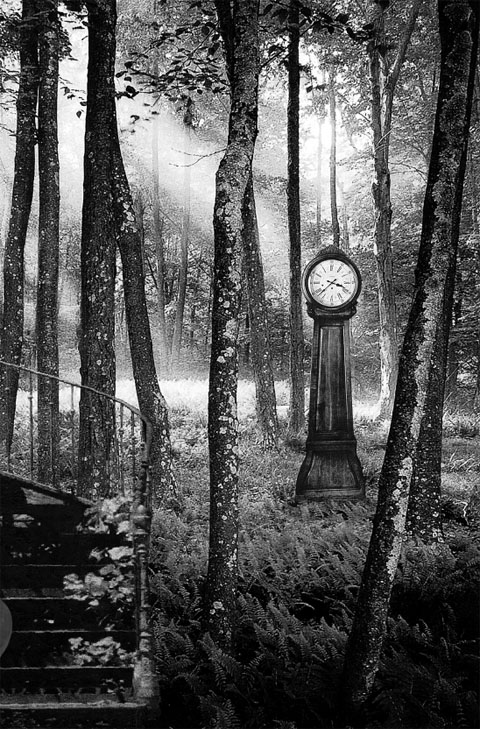
STEFAN EKMAN
Here Be Dragons
Exploring Fantasy Maps and Settings

WESLEYAN UNIVERSITY PRESS
Middletown, Connecticut
Wesleyan University Press
Middletown CT 06459
www.wesleyan.edu/wespress
2013 Stefan Ekman
All rights reserved
Manufactured in the United States of America
Designed by Richard Hendel
Typeset in Miller and Filosofia by Tseng Information Systems, Inc.
Wesleyan University Press is a member of the Green Press Initiative.
The paper used in this book meets their minimum requirement for recycled paper.
Library of Congress Cataloging-in-Publication Data
Ekman, Stefan, 1961
Here be dragons: exploring fantasy maps and settings / Stefan Ekman.
p. cm.
Includes bibliographical references and index.
ISBN 978-0-8195-7322-3 (cloth: alk. paper)
ISBN 978-0-8195-7323-0 (pbk.: alk. paper)
ISBN 978-0-8195-7324-7 (ebook)
1. Fantasy fictionHistory and criticism.
2. Landscapes in literature. I. Title.
PN3435.E38 2013
809.38766dc23 2012034770
5 4 3 2 1
Contents

Acknowledgments

As a rule, I do not travel alone; and during my explorations of fantasy landscapes, numerous traveling companions have joined me, suggesting better routes, offering invaluable advice, or just generally cheering me on. I have greatly appreciated the company of all of you.
My most heartfelt gratitude goes to Marianne Thormhlen, who provided unwavering encouragement during the entire project. My work has benefited enormously from her stimulating advice, attention to detail, and willingness to devote time and energy far above and beyond the call of duty. I could not have hoped for a better cicerone on this trip. I am also immensely grateful for the help and support of Tom Shippey, whose knowledge of Tolkien and numerous other areas of the fantastic has been a tremendous resource.
A number of people have discussed, read, and commented on various stages of this text. Above all, credit should go to the members of the Higher Literary Seminar in the English Studies section at the Centre for Languages and Literature, Lund University, whose willingness to dedicate time and effort to improving this text was always sincerely appreciated. This book owes a great deal to your work. My warmest thanks also go to Lisa Isaksson, Martin Andersson, Petra Andersson, David Sandboge, Susanna Karlsson, Viktoria Holmqvist, Christine Mains, Brian Attebery, Stefan Hgberg, Richard McKinney, Mattias Ekman, Farah Mendlesohn, Siv Tapper, and Jenni Tyynel for reading various drafts and sharing your knowledge (and libraries) with me.
For the quantitative map study in and Greta Thott Scholarship Fund), Fil dr Uno Otterstedts fond fr frmjande av vetenskaplig undervisning och forskning (Dr. Uno Otterstedt Fund for the Advancement of Scholarly Education and Research), Knut och Alice Wallenbergs stiftelse (Knut and Alice Wallenberg Foundation), and Hilma Borelius stipendiefond (Hilma Borelius Scholarship Fund).
Finally, I am deeply grateful to my friends and my extended family, who have been invaluable companions on the road of writing. I especially thank my parents for introducing me to fantasyland all those years ago and always accepting and supporting my commitment to the genre. Without you, this journey would never have begun. Most of all, I would like to thank Helena Francke, who has been with me every step of the way toward this book, however rough the going. Were it not for her patience with my constant talk of fantasy, and the generosity with which she gave of her time, expertise, and sound advice, this book would not have turned out the way it did, and my journey would have been a grueling and dreary trek indeed.
Here Be DRAGONS
1 : Introduction
R eading fantasy was always like going on a journey for me. It might have been to a curious place spied through the window, or to an impossibly exotic country far away. Sometimes the landscape was comforting and familiar; at other times, disturbing and alien. Blinding beauty or nauseating ugliness assailed my eyes. In these places, there were adventures and heroes, enigmas and challenges, but what stuck in my mind was often the various locations themselves. Some of them were natural landscapes: grand, open vistas or dense, mysterious forests; others were cities, with dark alleys, labyrinthine sewers, and architectural marvels. Many, admittedly, seemed to echo the European Middle Ages; but all eras and continents, as well as times and places unknown to me, appeared before my inward eye. Somehow, the stories seemed to revolve around these places, weaving in and out of them rather than just using them as backdrops for the action onstage.
This books deals with fantasy settings and the worlds that became so important to me in my reading. Instead of roaming the worlds one at a time, with the plot as my guide, I have explored them more systematically and for their own sakes, to reveal how they are constructed and how they interact with the other elements of the stories. As I delved into the fantasy worlds, I discovered much that surprised me; and my explorations also made me realize how truly intriguing the realms of fantasy are, and how deserving of critical investigation.
THE RELEVANCE OF SETTINGS
It is not uncommon for critics to draw attention to the importance of the natural environment in fantasy.
A number of studies have concerned themselves with the structure of the fantasy setting, discussing it in terms of its main structural components and how they relate to one another. A seminal example is Kenneth J. Zahorski and Robert H. Boyers The Secondary Worlds of High Fantasy,
Apart from occasional brief reflections on the landscapes central importance to fantasy, little has been written on the subject. In an article provocatively subtitled The Irrelevancy of Setting in the Fantastic, Roger C. Schlobin asserts his premise that [s]etting does not determine the fantastic. or place-focused, definition of fantasy, nor to suggest that setting is more important than character or plot. I am, however, in favor of topofocal readings of fantasy, as a complement to traditional approaches, because setting is as important as character and plot. Fantasy offers possibilities to create fictive worlds that are fundamentally different from our own, even in cases when the setting masquerades as a copy of the world we live in. Such differences are common and constitute integral parts of the fantasy stories in which they occur.
A particular kind of difference separating our world from the settings of fantasy provides the focus for this book. A physical environment can be divided in many waysbetween sea and land, along tribal, linguistic, or political lines, cut up into any number of types of units on mapsand this is true regardless of whether the environment is actual or imaginary. But most divisions of our world are social constructs, foisted on the land, and the most basic division is that between the landscape and ourselves. In fantasy, the situation can be, and often is, different: the land can be divided into areas where separate sets of rules of causality and laws of nature apply; dividing lines that we are familiar with can be rethought; and the division between people and their environment can be bridged. The setting plays a central role in a fantasy story, and to increase our understanding of the genre, we need to learn more about this role. This book uses a topofocal perspective to examine four basic types of divisions and their function in relation to the world of which they are a part, as well as in terms of the story in which they are used.
Next page
